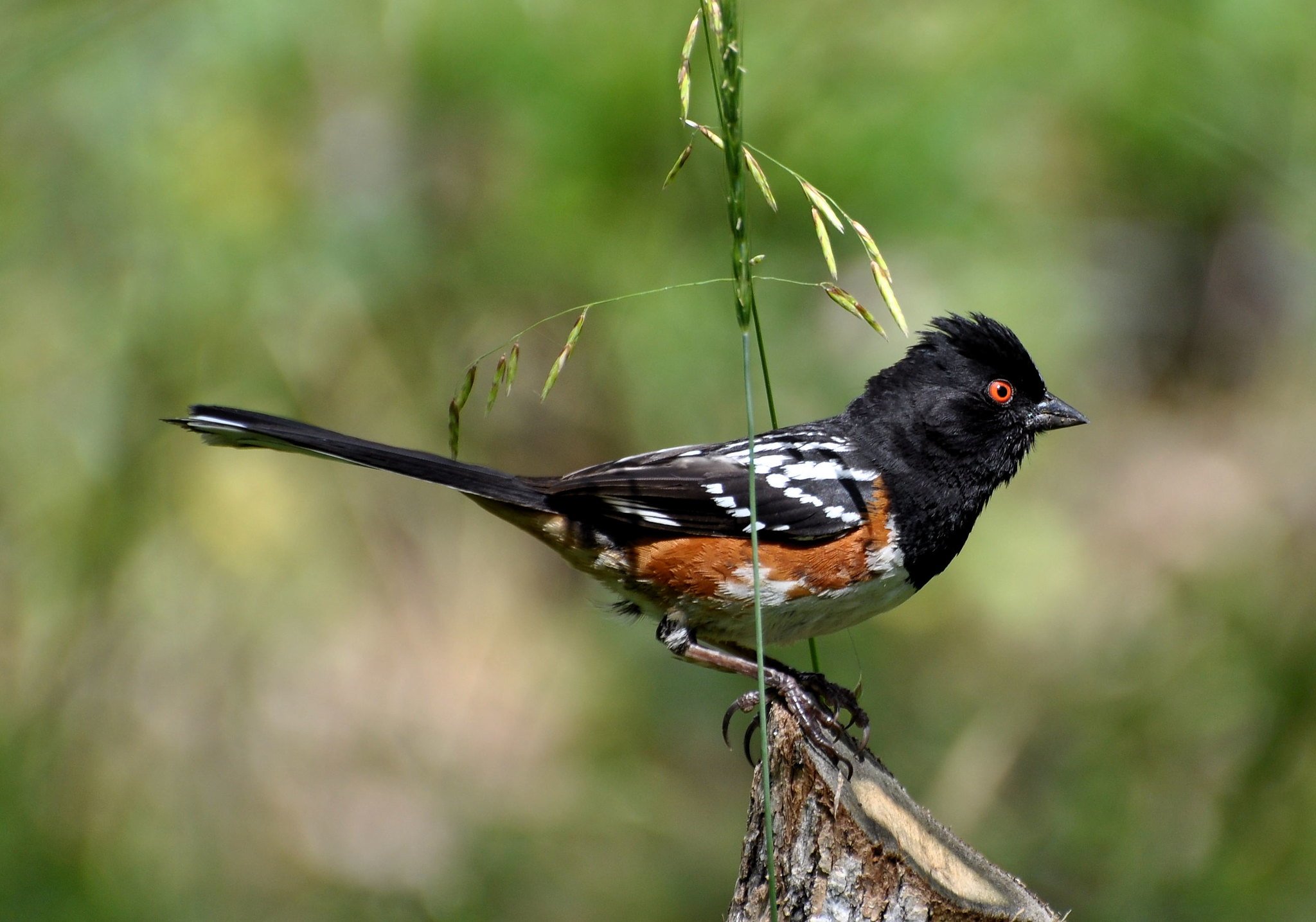Bear Creek Community Bird Survey 2022 Update
The Bear Creek Community Bird Survey (BCCBS) has been an ongoing community science project for the past two years, 2021-2022. This survey aims to measure riparian bird abundance along Bear Creek between Ashland and Central Point, OR. This project was made possible by community scientists and by local partners Klamath Bird Observatory (KBO), Rogue River Watershed Council (RRWC), Rogue Valley Audubon Society, and Southern Oregon Land Conservancy.
These surveys are completed year-round, but data collected during the breeding season are KBO’s current focus of analysis. While migration and winter habitat are also essential for birds, it’s easier to obtain reliable bird counts during the breeding season because male birds sing consistently to attract mates and mark their territories. Survey data are collected and stored using eBird NW.
Spotted Towhee perched on a tree (Credit: Frank Lospalluto)
The surveys were done at seven sites between Central Point and Ashland. Five of those sites were burned during the 2020 Almeda and Central Point Fires, providing a unique opportunity to observe the changes in bird populations immediately after a fire and long-term post-fire recovery. In spring 2021, there was a notable difference between birds considered habitat generalists and riparian specialists. American Robin, a ground-foraging generalist, was equally or more abundant in burned sites than unburned sites. At the same time, riparian specialists Yellow-breasted Chat and Yellow Warbler were much more common in unburned sites in the post-fire conditions of 2021. By 2022, there had been substantial regrowth of willow, ash, and cottonwood seedlings that these species can use as nesting and foraging habitat. American Robin abundance decreased, while Yellow-breasted Chat and Yellow Warbler increased or remained stable across most sites.
Community surveyor looking for riparian birds at a survey site. (Credit: David Rockwell)
A set of 13 focal bird species were identified to help assess habitat quality along Bear Creek. The species used are expected to be common in a healthy riparian habitat in southern Oregon. In 2022, only one of the seven sites had ten or more focal species in sufficient numbers: North Mountain Park. This gave Bear Creek Greenway a poor rating. This isn’t unexpected with the Greenway being located in a relatively urban setting and the impact of the 2020 fires on riparian vegetation. This snapshot of Bear Creek riparian bird population health may improve with natural vegetation regrowth, and active restoration efforts are underway. Bear Creek Community Bird Survey data will provide a measuring stick for tracking future changes in bird populations that may occur due to ongoing restoration efforts (or adverse effects of habitat loss, climate change, etc.).
This post was adapted from Klamath Bird Observatory’s original post found here. Featured photo credit: Emmalisa Whalley


